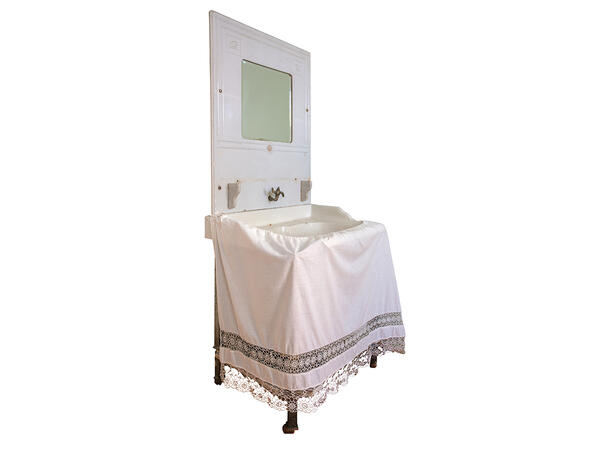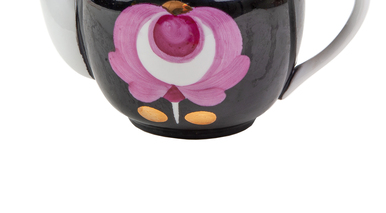A washstand produced by the British firm Brown Westhead Moore & Co, a well-known manufacturer of tableware and porcelain, is on display in the Mazhit Gafuri House-Museum. It was purchased by Gafuri in the 1920s and stood in his bedroom during his lifetime.
In England, private merchants were the pioneers of porcelain production, which flourished in the second half of the 18th century, when the largest factories appeared in the country. A few more porcelain factories opened in the 19th century, which were more modern. However, the artistic level of their products was not very high: they mainly sold household goods. At that time, all of the English factories were private, and as a rule, they used the owners' armorial shields or monograms as a mark. They also put the name of the manufacture place or the names of the founders on the items. Many of them imitated Chinese porcelain makers and decorated their items with Oriental patterns.
The washbasin in the museum’s collection is made of white marble. Thomas Chappell Brown-Westhead and William Moore founded the company that produced it in 1862. After Moore’s death in 1866, his brother James took over the management of the firm. In 1872, he purchased the factory and set up production of large-sized kitchenware, decorative items, and cookware. Its goods were especially popular in America and Russia. Since 1890, the company’s logo was stamped with the coat of arms of Great Britain — a lion and a unicorn holding a shield. This was considered a sign of the highest quality porcelain. History even knows many cases of counterfeiting: the producers branded in the form of altered image of the coat of arms to sell their products more expensive. In Brown Westhead Moore & Co, the mark was real.
The company was called Brown Westhead Moore & Co. until 1904, during the period of rapid growth. Later, the owner of the company changed, and it became Cauldon Potters Ltd. The quality items of the company were popular both in Europe and in Russia — buyers appreciated them, despite their high cost.
In England, private merchants were the pioneers of porcelain production, which flourished in the second half of the 18th century, when the largest factories appeared in the country. A few more porcelain factories opened in the 19th century, which were more modern. However, the artistic level of their products was not very high: they mainly sold household goods. At that time, all of the English factories were private, and as a rule, they used the owners' armorial shields or monograms as a mark. They also put the name of the manufacture place or the names of the founders on the items. Many of them imitated Chinese porcelain makers and decorated their items with Oriental patterns.
The washbasin in the museum’s collection is made of white marble. Thomas Chappell Brown-Westhead and William Moore founded the company that produced it in 1862. After Moore’s death in 1866, his brother James took over the management of the firm. In 1872, he purchased the factory and set up production of large-sized kitchenware, decorative items, and cookware. Its goods were especially popular in America and Russia. Since 1890, the company’s logo was stamped with the coat of arms of Great Britain — a lion and a unicorn holding a shield. This was considered a sign of the highest quality porcelain. History even knows many cases of counterfeiting: the producers branded in the form of altered image of the coat of arms to sell their products more expensive. In Brown Westhead Moore & Co, the mark was real.
The company was called Brown Westhead Moore & Co. until 1904, during the period of rapid growth. Later, the owner of the company changed, and it became Cauldon Potters Ltd. The quality items of the company were popular both in Europe and in Russia — buyers appreciated them, despite their high cost.



